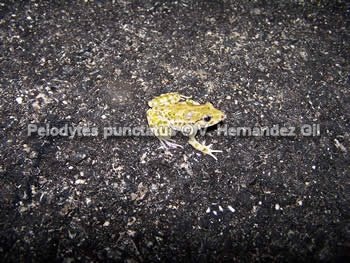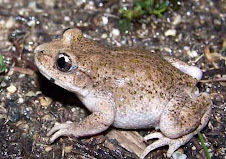Si te parece lejano: América y Australia, visita la web http://www.sosanfibios.org PUES TAMBIÉN ESTÁ OCURRIENDO EN ESPAÑA. Así que debemos estar atentos a las señales que indican la aparición de esta enfermedad.
Emerging infectious disease and the loss of biodiversity in a Neotropical amphibian communityKaren R. Lips*,{dagger}, Forrest Brem*, Roberto Brenes*, John D. Reeve*, Ross A. Alford{ddagger}, Jamie Voyles§, Cynthia Carey§, Lauren Livo§, Allan P. Pessier¶, and James P. Collins||
*Department of Zoology, Southern Illinois University, Carbondale, IL 62901-6501; {ddagger}School of Tropical Biology, James Cook University, Townsville, Queensland 4811,Australia; §Department of Integrative Physiology, University of Colorado, Boulder, CO 80309-0354; ¶Division of Pathology, Conservation and Research for Endangered Species, Zoological Society of San Diego, San Diego, CA 92112-0551; and ||School of Life Sciences, Arizona State University, Tempe, AZ 85287-4501
Edited by David B. Wake, University of California, Berkeley, CA, and approved December 26, 2005 (received for review August 9, 2005)
Pathogens rarely cause extinctions of host species, and there are few examples of a pathogen changing species richness and diversity of an ecological community by causing local extinctions across a wide range of species. We report the link between the rapid appearance of a pathogenic chytrid fungus Batrachochytrium dendrobatidis in an amphibian community at El Copé, Panama, and subsequent mass mortality and loss of amphibian biodiversity across eight families of frogs and salamanders. We describe an outbreak of chytridiomycosis in Panama and argue that this infectious disease has played an important role in amphibian population declines. The high virulence and large number of potential hosts of this emerging infectious disease threaten global amphibian diversity.
Y ESTE OTRO, DE ESTE MISMO MES DE FEBRERO DE 2006:
Amphibian diversity: Decimation by diseasePieter T. J. Johnson*
Center for Limnology, University of Wisconsin, 680 North Park Street, Madison, WI 53706-1492
Disease emergence and biodiversity loss are among the most pervasive environmental problems confronting science and society. Widespread and dramatic losses of amphibian populations and species represent the deadly intersection between these issues (1), as illustrated by the work of Lips et al. (2) in this issue of PNAS. Amphibians are one of the most imperiled groups of vertebrates, with nearly half of all species in decline and >100 species extinct or nearly so (3). Although a number of these declines can be linked to habitat loss and land-use changes (4), many of the most rapidly declining species (nearly 50%) occur in areas without obvious environmental changes. Even more disturbing is that affected populations show few signs of recovery, and analyses across species and time confirm the unusual and unidirectional downward trend (5).
Since discovery of a chytrid fungus (Batrachochytrium dendrobatidis) pathogenic to amphibians in the mid-1990s (6), increased attention has focused on the pathogen’s role in the death and disappearance of amphibians. Batrachochytrium has been recovered from the skin of dead or dying frogs associated with numerous population declines, particularly from Central America, Australia, and New Zealand (7, 8). Experimental exposure of healthy frogs to chytrid zoospores causes rapid deterioration and death in certain species (6, 9). Although Batrachochytrium cannot explain all enigmatic amphibian population declines, the evidence linking the pathogen to amphibian losses has grown considerably in the last decade, and >60 studies have detailed its origin, pathology, physiology, life cycle, genetic variation, and infection dynamics.
Despite enormous progress, the link between Batrachochytrium infection and amphibian population declines has been hindered by data limitations (see ref. 10). During declines in Central America and Australia, for example, little information . . . [Full Text of this Article]













